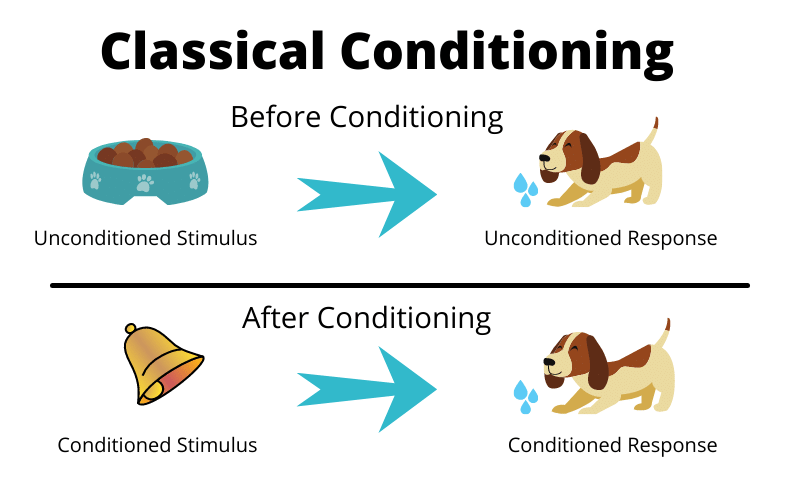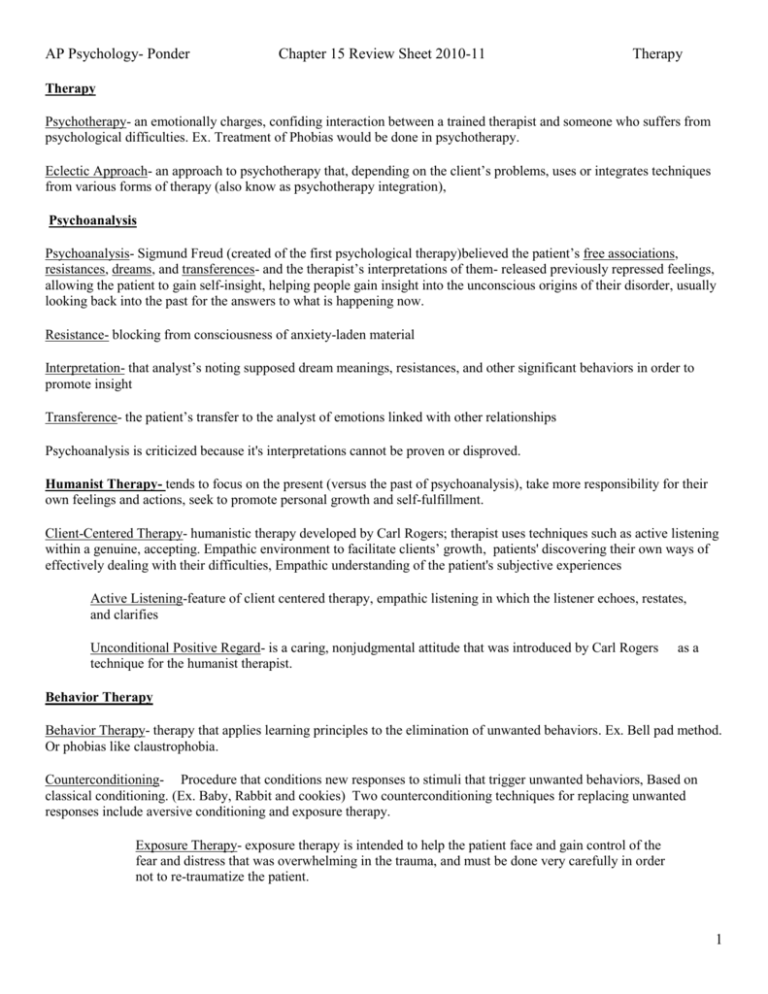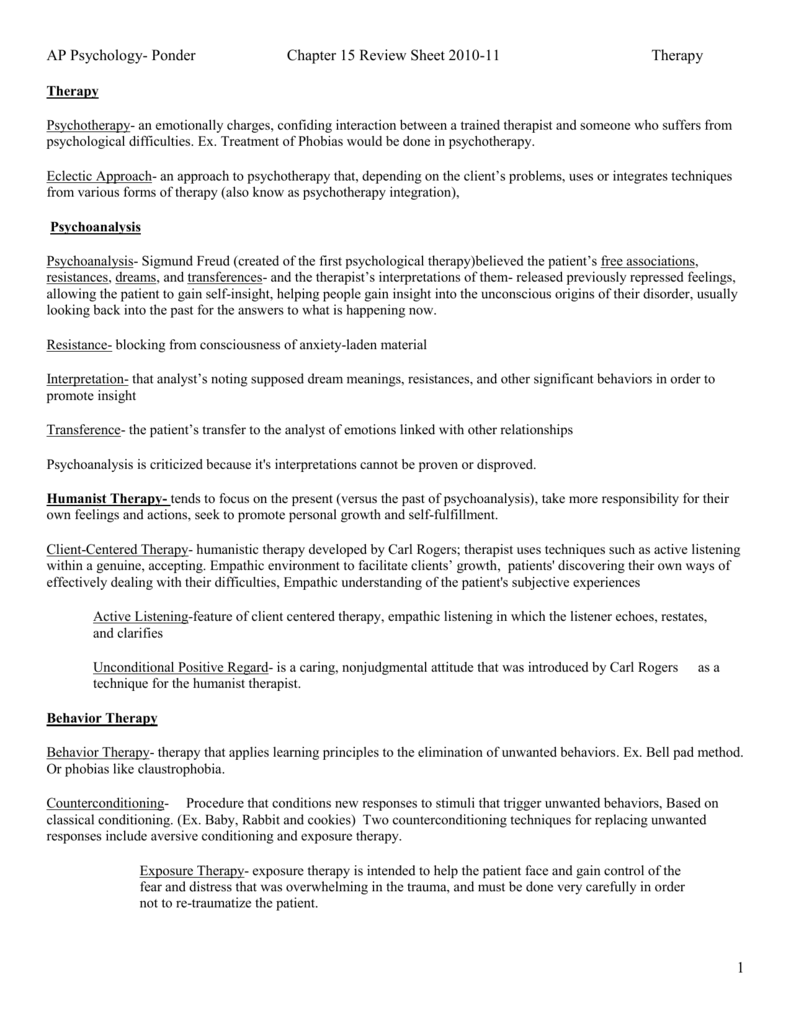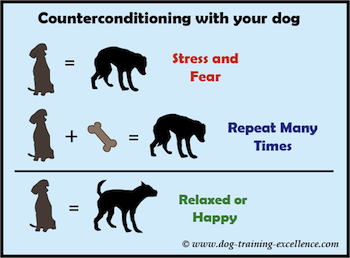1 systematic desensitization and free association. Aversive conditioning and exposure therapy.

What Is Classical Conditioning Explore Psychology
Bennys mother tries to reduce his fear of sailing by giving the 3-year-old his favorite candy as soon as they board the boat.

. The treatment of serious psychological disorders with prescribed medications or medical procedures that directly influence the nervous system is. Two counterconditioning techniques for replacing unwanted responses are A systematic desensitization and free association. This technique is known as answer aversive conditioning.
3 unconditional positive regard and transference. Systematic desensitization and free association. This preview shows page 15 - 18 out of 32 pages.
4 aversive conditioning and exposure therapy. Two counterconditioning techniques for replacing unwanted responses include a. Some antidepressants block the reuptake or breakdown of both serotonin and another neurotransmitter.
Question Two counterconditioning techniques for replacing unwanted responses are answer aversive conditioning and exposure therapy. Two counterconditioning techniques for replacing unwanted responses are aversive conditioning and exposure therapy. B interpersonal psychotherapy and.
Two counterconditioning techniques for replacing unwanted responses are A systematic desensitization and free association. View full document See Page 1 74. In treating alcohol use disorder therapists have clients consume alcohol that contains a nausea-producing drug.
Unconditional positive regard and transference D. C unconditional positive regard and transference. If you can make the animal feel comfortable or good when they interact with the stimulus then they will be less and less likely to elicit the unwanted response.
Two counterconditioning techniques for replacing unwanted responses are aversive conditioning and exposure therapy. Through counter conditioning you change the way the animal feels about the stimulus. Examples of Counter Conditioning.
Two counterconditioning techniques for replacing unwanted responses are A. Two counterconditioning techniques for replacing unwanted responses include. Systematic desensitation and free association B.
Spontaneous recovery and stress inocculation training C. C unconditional positive regard and transference. Two counterconditioning techniques for replacing unwanted responses are a systematic desentization and free association b spontaneous recovery and stress inoculation training c unconditional positive regard and transference d aversive conditioning and exposure therapy.
These antidepressants are called. Two counterconditioning techniques for replacing unwanted responses include. Two counterconditioning techniques for replacing unwanted responses include.
Spontaneous recovery and stress inoculation training. C unconditional positive regard and transference. B spontaneous recovery and stress inoculation training.
To help him overcome his fear of flying his therapist makes him make things that trigger. Unconditional positive regard and transference. C unconditional positive regard and transference.
B interpersonal psychotherapy and stress inoculation training. It is applied with some frequency to treat irrational fears in both human beings and animals as well as addictions. 2 spontaneous recovery and stress inoculation training.
B interpersonal psychotherapy and stress inoculation training. D aversive conditioning and exposure therapy. B dialectical behavior therapy and stress inoculation training.
The treatment of serious psychological disorders with prescribed medications or medical procedures that directly influence the nervous system is called. A systematic desensitization and free association. Counterconditioning is a psychological technique developed from a behavioral orientation that consists of remove an unwanted response and replace it with another more appropriate by using pleasant stimuli.
Two counterconditioning techniques for replacing unwanted responses are A systematic desensitization and free association. B behavior modification and stress inoculation training. C unconditional positive regard and transference.
Instead the response will be replaced by something more pleasant. Aversive conditioning and exposure therapy. Token economy and meta-analysis.
Two counterconditioning techniques for replacing unwanted responses are A systematic desensitization and free association. Two counterconditioning techniques for replacing unwanted responses are A systematic desensitization and free association. Two counterconditioning techniques for replacing unwanted responses are aversive conditioning and exposure therapy.

Counter Conditioning Definition Examples Video Lesson Transcript Study Com

Behavioral And Neural Processes In Counterconditioning Past And Future Directions Sciencedirect

Operant Counterconditioning Mills Horsemanship Hoofcare

What Is Counterconditioning What Does Counterconditioning Mean Youtube



0 comments
Post a Comment